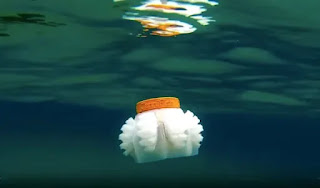New technology that will protect the seas
Phenomena such as deforestation or the proliferation of garbage in rural areas are immediately perceptible, however, it is not so easy to appreciate the deterioration of the seabed. The devastation of posidonia meadows or the annihilation of coral reefs are just a few examples.
In fact, it was recently found that there was plastic debris at the bottom of the Mariana Trench, the deepest place in our oceans. For this reason, developing technologies that facilitate the monitoring of marine health is an unavoidable priority. If we recently saw an example of robotic fish, this time we will examine the potential of a new autonomous technology: robotic jellyfish.
Researchers at the Department of Ocean and Mechanical Engineering at Florida Atlantic University (FAU) aimed to develop an extremely versatile and flexible technological device that could access small underwater cavities. When looking for aquatic animals and organisms to serve as inspiration, the example of jellyfish soon came to mind. On the one hand, they have a swim bladder that allows them to use seawater to control the depth at which they move and, on the other hand, they have soft tissues of great interest when developing a flexible prototype. The FAU scientists started from this model to develop five devices with varying degrees of rigidity with the aim of accessing spaces forbidden to other technologies.
The starting point was a design made by 3D printing. Each model has eight tentacles inspired by the moon or umbrella jellyfish. In turn, each tentacle has a channel that extends from the center of the robot and uses a hydraulic propulsion system, with four of them connected to each side of the machine. Thus, the robotic jellyfish can move in one direction only with the impulse of four of its tentacles. The arrangement of the propellers allows the robot to rotate, ascend, descend or advance. Lastly, the central cylindrical case containing the microcontrollers and battery was also 3D printed.
Thanks to the silicones used in their manufacture, these biomimetic robots can enter any corner of a coral reef and examine its state.
The next objective is to add a series of environmental sensors based on sonar technology that allow the device to determine the space around it.
If the preservation of these underwater ecosystems is an advance, the application of 3D printing techniques to restore them is no less. This is the strategy of the company Reef Design Labs, which is installing ceramic reefs created by additive printing in places like the Caribbean or the Maldives. Those responsible for this innovative technological project submerge the structures with fragments of living coral, with the idea that these organisms will colonize them over time. Ultimately, they would attract algae and fish to form new ecosystems. In addition to a rich fauna, if one day you decide to dive in the Maldives you will find the largest artificial coral reef in the world.



.jpg)

![🚀 Descarga WhatsApp Plus para Android [Actualizado 2025]](https://blogger.googleusercontent.com/img/b/R29vZ2xl/AVvXsEhywzhioSXhRHuHTZDTcVciTt2gwvfma8JIDfzYwMZkeFioqc1HkBbHceT_kZd__rn-Ue6EuWo4Hz9zSa6xEJeMP3HRX75azSOrlXGPBTjdedFFPEawoHvUYiRvwt7Bx6HaMoflDXg2x5SgUAe59Ne1RQR-dPDKYH0zTqsntqxEdWUh00dP1iXqYZOc2qI/w100/hq720.jpg)
0 Comentarios